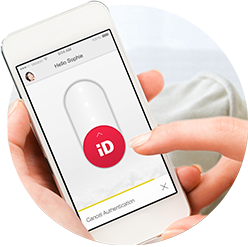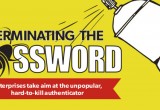Ping Identity moving to ‘post-password world’
22 July, 2014
category: Corporate, Digital ID, Financial
Ping Identity announced the launch of new products and updates that are aimed at deprecating the use of passwords for authentication at the Cloud Identity Summit.
The company is launching PingID, a security solution for one-swipe mobile authentication. The launch also features upgrades to the company’s PingFederate, PingAccess and PingOne product lines.
“Our customers are facing challenges because passwords are the most user friendly approach to authentication,” says Loren Russon, vice president of product management and design at Ping Identity. “Trying to carry around something else can be painful and people also don’t want to constantly re-authenticate.”
PingID is designed to make all this easier by using a person’s mobile device for authentication.
With the PingID app, end users swipe their smart phone for authentication as a primary or second factor to access applications and services. Built on an adaptive authentication framework, PingID can deliver access policies to applications based on geolocation, a challenge response, or a unique swipe pattern.
Employees download the app and register it by scanning a unique QR code that enables the app to be used for access. How it’s used beyond that depends on the enterprise.
One of Ping’s clients is a large electronics company. It had acquired another company with a strict password policy already in place for access to its portals. To ease the authentication burden, the company deployed PingID along with federation product. “This enables a single authentication event leveraging federated identities to access private and public cloud resources,” he explains
A basic use case has employees logging in to a portal. They enter a user name and password and then a request is sent to their mobile device. Once the app is opened and swiped on the mobile they are granted access to a dashboard of all available applications.
A retailer in Silicon Valley is using PingID as a second factor of authentication. Employees login to active directory with their usual credentials, and then depending on what they are accessing, may have to use the app on their device for additional authentication.
The plan is to eventually add contextual authentication to PingID as well, says Russon. Depending on the geo-location on your device of what an employee is trying to do, different authentication events might be triggered.
In addition to PingID, the company announced new capabilities for PingFederate, PingAccess and PingOne.
- Federated Access Management – New capabilities in PingFederate and PingAcess come together to give enterprises a way to move their business applications and infrastructure across mobile and into the cloud. Enterprises can extend their existing directory stores and authentication methods across web and mobile properties, as well as public and private clouds — regardless of the device. This solution provides identity security for enterprises with Mobile App Development/API projects; Amazon AWS, private and hybrid cloud projects; and customer and partner federation initiatives.
- PingOne Summer – PingOne is an enterprise-grade ID as a Service solution that enables IT to deliver a compelling user experience with the access control and security policies that the organization requires. The application catalog provides users with personal and business applications from the PingOne application. New multi-factor authentication support enables organizations to add an extra layer of security to business applications, including the new PingID app or their multi-factor authentication of choice. Also, new internationalization features meet global enterprise requirements for non-English interfaces — starting with French and German — and privacy domicile capabilities allow administrators to customize personal privacy protections by region.




